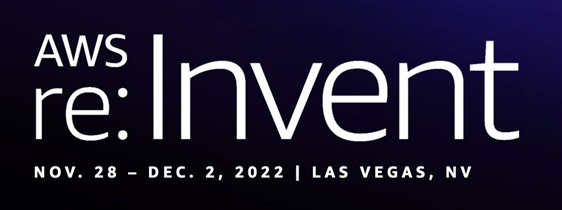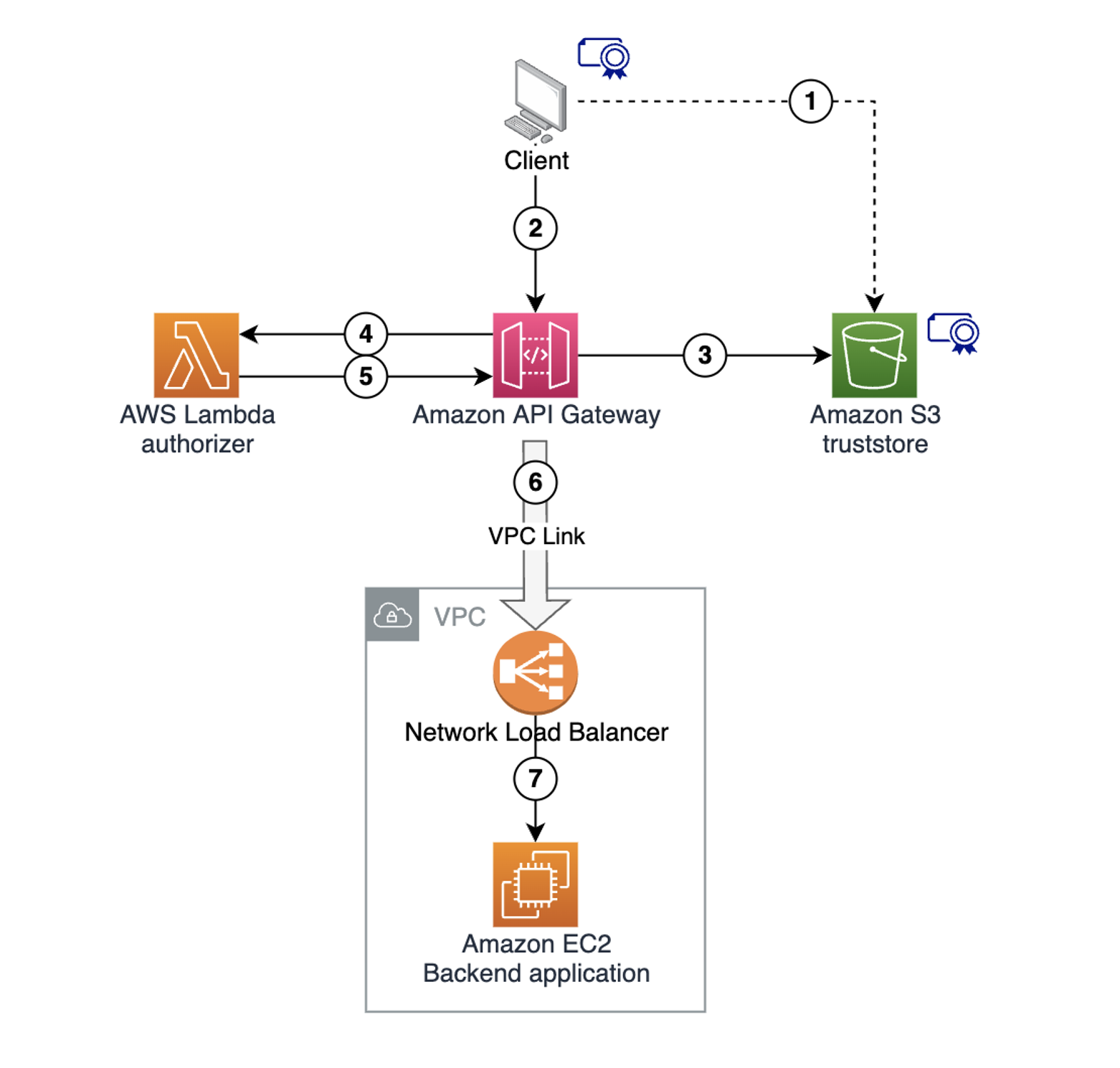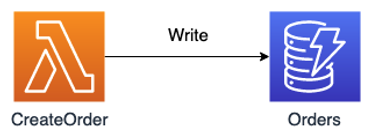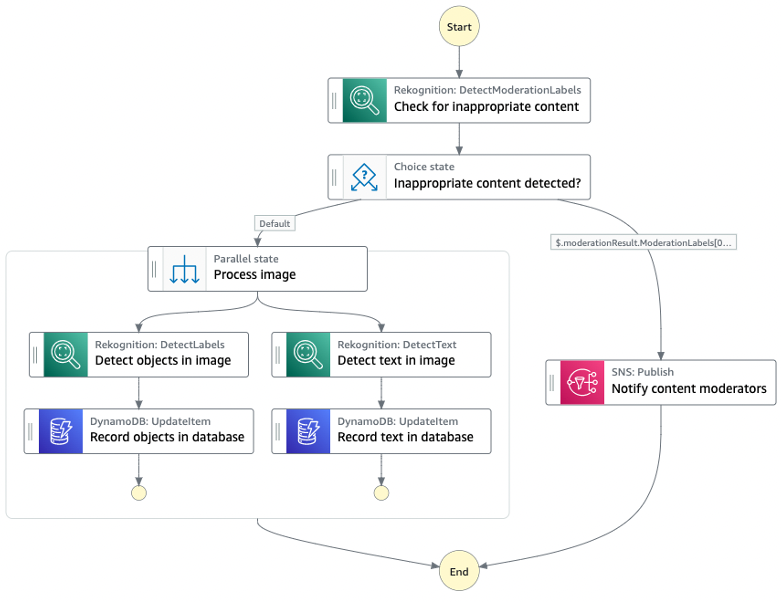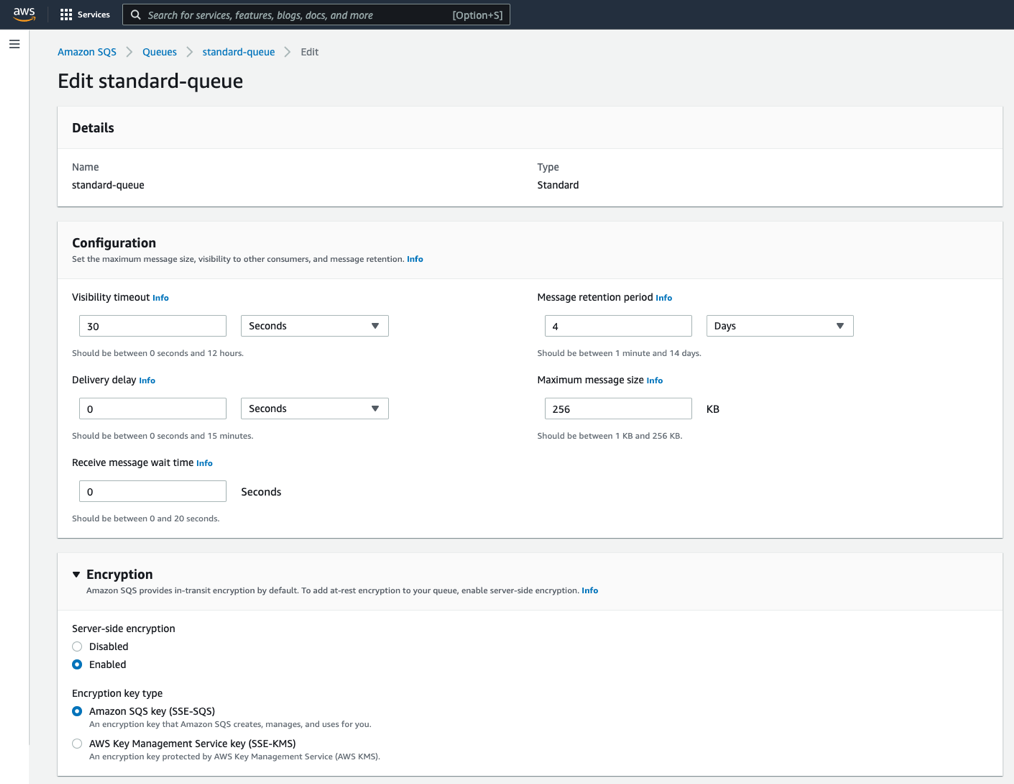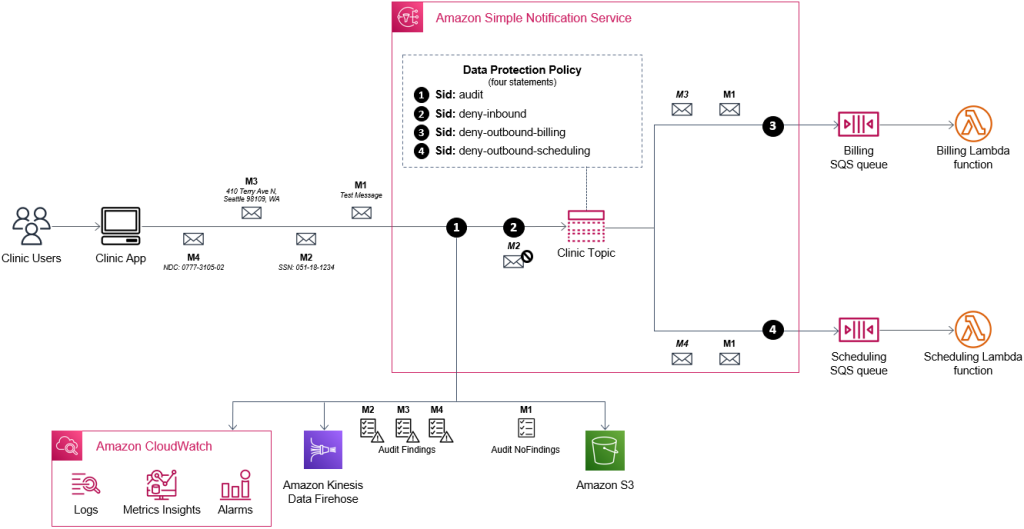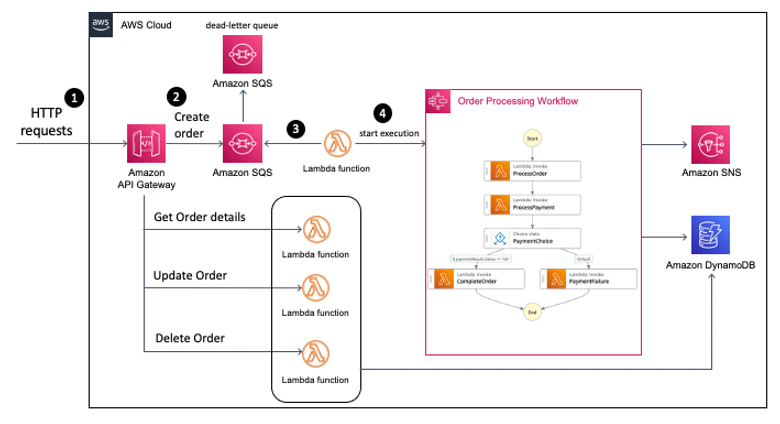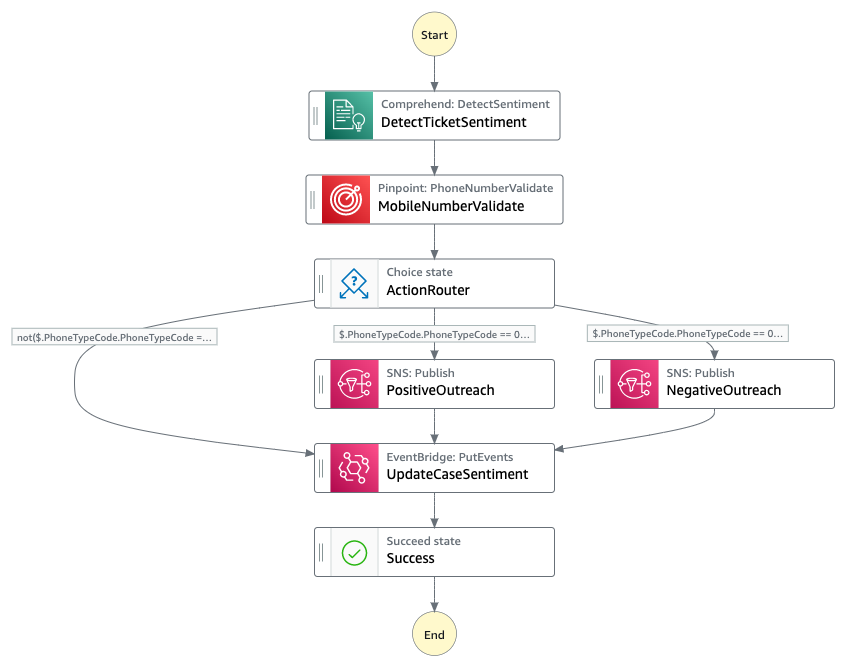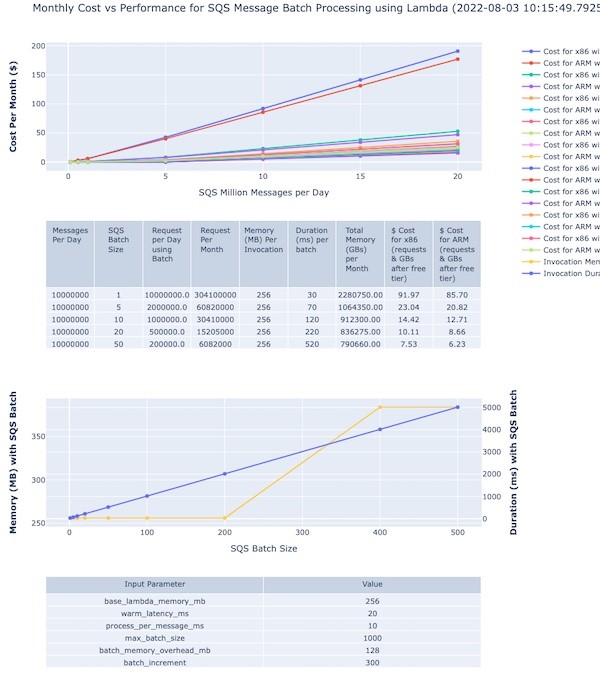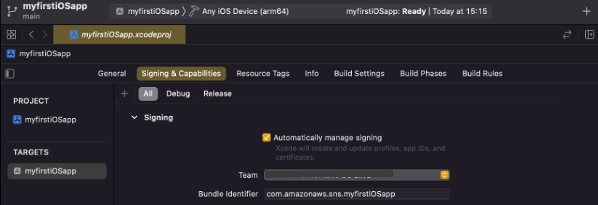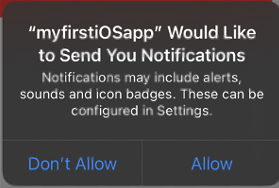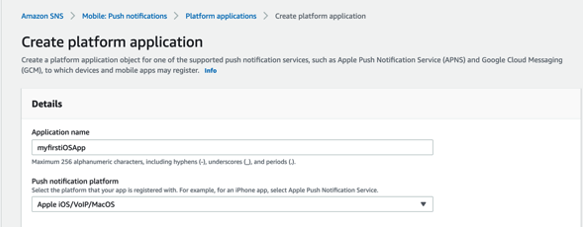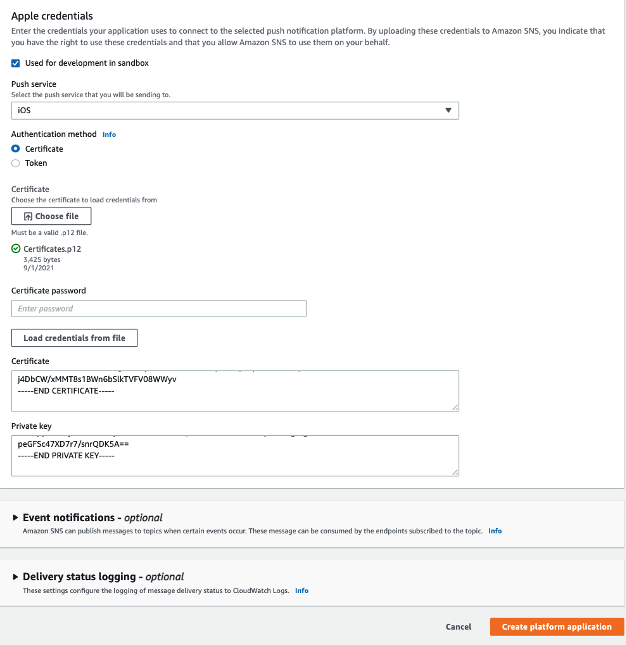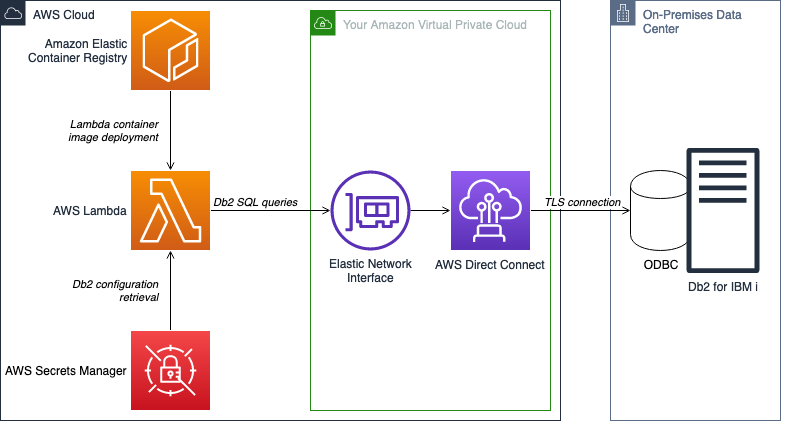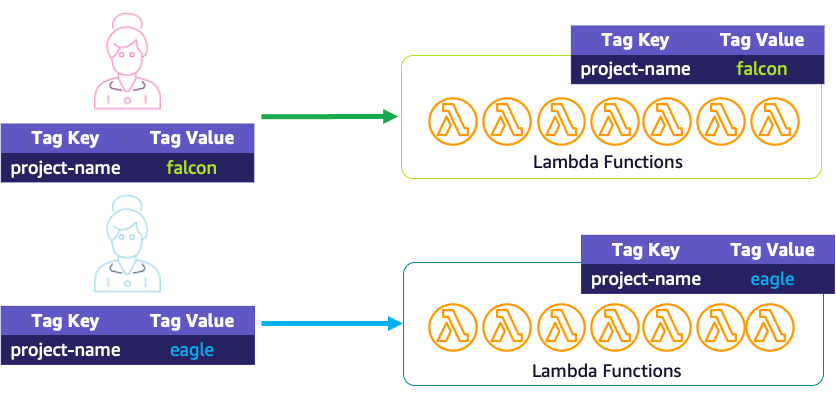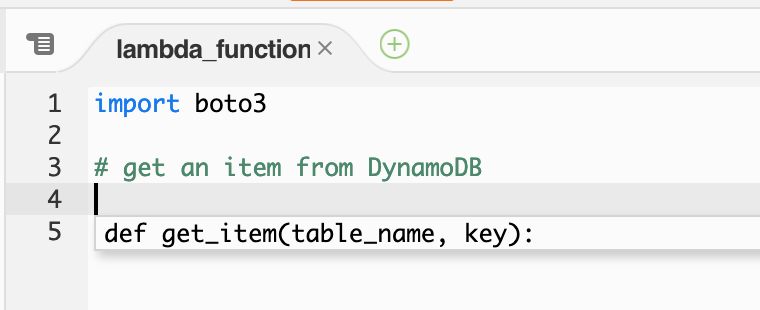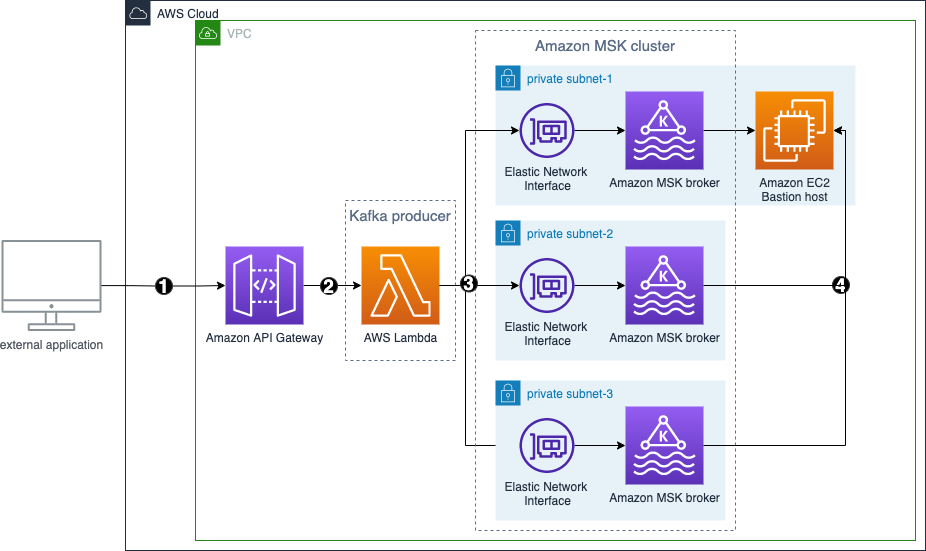Post Syndicated from James Beswick original https://aws.amazon.com/blogs/compute/enriching-operational-events-with-aws-serverless/
This post was written by Ben Moses, Senior Solutions Architect, Enterprise.
AWS Serverless is a fit for many IT automation and operations use cases, especially for reacting to events. Infrastructure events are a useful way to understand the health of your infrastructure that supports your applications and customers and this blog examines using serverless to help enrich these operational events.
The scenario used in this post shows how an infrastructure event can be intercepted in real-time, enriched with additional information from your AWS environment and workloads, and be sent to a downstream consumer with the added valuable information.
This example focuses on Amazon EC2 state change events. The concept applies to any type of event, for example those emitted by other AWS services to Amazon CloudWatch Events. These events could also include events produced by AWS Config, and some of AWS CloudTrail’s events, including CloudTrail Insights.
The purpose is to add more valuable information and context to events in real-time. Operators and downstream consumers can then identify emerging patterns in near real-time.
How does this happen today?
It is common for existing solutions to store infrastructure events in whatever format the source system generates, or in a standardized open or proprietary format. Operations staff and systems then analyze these logs to understand patterns and to support root cause analysis. This data must often be enriched by other sources to give it context and meaning. This is done either in a scheduled batch operation by using CSV data from other systems, or by integrating with other enterprise tooling.
The state of your cloud infrastructure changes frequently due to the elasticity and disposability of resources. This can cause an issue with your data quality when using the schedule batch method. When you come to enrich an infrastructure event, the state may have changed by the time your scheduled batch runs. This leads to gaps or inaccuracies in data, which makes it harder for operators to spot trends and anomalies.
A serverless approach
This example uses serverless services and concepts from event driven architecture (EDA). With this architecture, you only pay when events happen and are enriched. There’s no need for any third-party tooling, and your events are enriched in near real-time.
The EC2 “State Change Event” is enriched by obtaining the instance’s name tag, if it has one. The end-to-end journey look like this:
- An EC2 instance’s state changes (i.e., shutdown, restart).
- An Amazon EventBridge rule that matches the event pattern triggers a target action to run an AWS Step Functions state machine.
- The state machine transforms inputs, makes a native AWS API SDK call to the EC2 service to find a name tag, and emits a newly enriched event back to EventBridge.
- An EventBridge rule matching the enriched event triggers an action to send an email via Amazon SNS to simulate a downstream consumer.
EventBridge is a serverless event bus that can be used with event driven architectures on AWS. An EventBridge rule is defined with a pattern, and if an event matches that pattern, then the rule’s target action is triggered. In this example, the rule is:
{
"detail-type": ["EC2 Instance State-change Notification"],
"source": ["aws.ec2"]
}
An EC2 state change event looks like this:
{
"version": "0",
"id": "672123fe-53aa-3b22-3b37-1fae26df2aff",
"detail-type": "EC2 Instance State-change Notification",
"source": "aws.ec2",
"account": "1234567890",
"time": "2022-08-17T18:25:01Z",
"region": "eu-west-1",
"resources": [
"arn:aws:ec2:eu-west-1:1234567890:instance/i-1234567890"
],
"detail": {
"instance-id": "i-0123456789",
"state": "running"
}
}
See the detail-type and source fields in the event. These match the rule and this entire event payload is passed on to the next component of the architecture: the Step Functions state machine.
Step Functions uses JSONPath to select, transform, and move data through the states within a state machine. This flexibility means that, in this example, no compute resources such as AWS Lambda are required. This can mean less custom code, lower cost, and less complexity.
Step Functions Workflow Studio lets you design workflows visually. These are the key actions that take place when the state machine runs using the EC2 state change event:
1. Remove problem characters from input
Pass states allow us to transform inputs and outputs. In this architecture, a Pass state is used to remove any problem characters from the incoming event that are known to cause issues in future steps, such as API calls to services.
In this example, the parameters for the API call used in Step 2 requires the EC2 instance ID. This information is in the detail of the original event, but the API action can’t use anything with a hyphen in it.
To solve this, use a JSONPath Parameter to effectively rewrite this information without the hyphen. This creates a new field named instanceid, which is assigned the value from the original event’s detail.
{
"instanceid.$": "$.detail.instance-id"
}
2. Get instance name from Tag
The “EC2: DescribeInstances” task in Step Functions is an example of a native SDK integration with an AWS service. This action expects a single parameter to the API, an array of EC2 instance IDs.
{
"InstanceIds.$": "States.Array($.detail.refined.instanceid)"
}
The States.Array() intrinsic function is used to wrap the instance ID from the re-written field created in step 1. This single-member array is then passed to the EC2 Describe Instances API.
When a response is received from the EC2 Describe Instances API call, it is passed to a Result Selector. The purpose of this is to extract the value of a “Name” tag, if one was returned from the EC2 Describe Instances API.
Step Functions supports the use of JSONPath filter expressions.
{
"instancename.$": "$..Reservations[0].Instances[0].Tags[?(@.Key==Name)].Value",
"instanceid.$": "$.Reservations[0].Instances[0].InstanceId"
}
To understand the advanced JSONPath filter expression used in this example, read this blog post.
If an error occurs with the API call, or the filter expression is unable to find a “Name” tag on the EC2 instance, then Step Functions allows you to handle these errors within the workflow.
3. Convert instance name to a string
The output from the previous state returns an array, but an EC2 instance can only have one unique “Name” tag. A pass state is used again, with a parameter as seen in Step 1. This parameter expression takes the first element from the array and stores it in a new field named instancename.
{
"instancename.$": "$.detail.refined.instancename[0]",
"instanceid.$": "$.detail.refined.instanceid"
}
As with previous steps, the instanceid is re-written as part of the output, and both of these values are appended to the state’s output.
4. Get default name from Parameter Store
If the filter expression in the result selector in step 2 fails for any reason, then Step Functions error handling moves here.
Failures can happen for a variety of reasons, and with Step Functions, you can branch out error handling for each different error type. In this example, all errors are dealt with the same regardless of the cause being a missing “Name” tag, or a permissions issue. In this architecture, a default placeholder value is used in place of the name of the instance. In your context, a different approach may be more suitable.
The default placeholder name is stored as a static value in AWS Systems Manager Parameter Store. The native Systems Manager: GetParameter action within Step Functions can retrieve this value directly. An advantage of this approach is that the parameter can be updated externally without having to make any changes to the Step Functions state machine itself.
5. Add ID back to refined
A pass state is used to format the response from the Parameter Store API and parameter expression then appends the default instance name on to the output.
Whether the workflow execution followed the intended execution path, or encountered an error, there is now an enriched event payload with an instance name.
6. Emit enriched event
The EventBridge: PutEvents native SDK action within Step Functions is used to construct and emit the enriched event.
{
"Entries": [
{
"Detail": {
"Message.$": "$"
},
"DetailType": "EnrichedEC2Event",
"EventBusName": "serverless-event-enrichment-ApplicationEventBus",
"Source": "custom.enriched.ec2"
}
]
}
The DetailType and Source of the enriched event are custom values, specified in the last step of the state machine. As you consider schemas for your events within your organization, note that the AWS prefix is reserved for AWS service events.
The enriched event payload looks like this:
{
"version": "0",
"id": "a80e378b-e9a7-8007-1f18-b947e6d72c4b",
"detail-type": "EnrichedEC2Event",
"source": "custom.enriched.ec2",
"account": "123456789",
"time": "2022-08-17T18:25:03Z",
"region": "eu-west-1",
"resources": [
"arn:aws:states:eu-west-1:123456789:stateMachine:EventEnrichmentStateMachine-2T5jFlCPOha1",
"arn:aws:states:eu-west-1:123456789:execution:EventEnrichmentStateMachine-2T5jFlCPOha1:672123fe-53aa-3b22-3b37-1fae26df2aff_90821b68-ba92-2374-5015-8804c8da5769"
],
"detail": {
"Message": {
"version": "0",
"id": "672123fe-53aa-3b22-3b37-1fae26df2aff",
"detail-type": "EC2 Instance State-change Notification",
"source": "aws.ec2",
"account": "123456789",
"time": "2022-08-17T18:25:01Z",
"region": "eu-west-1",
"resources": [
"arn:aws:ec2:eu-west-1:123456789:instance/i-123456789"
],
"detail": {
"instance-id": "i-123456789",
"state": "running",
"refined": {
"instancename": "ec2-enrichment-demo-instance",
"instanceid": "i-123456789"
}
}
}
}
}
Consuming enriched events
When enriching event data in real-time, the events are only valuable if they’re consumed. To use these enriched events, a consuming service must create and own a new EventBridge rule on the custom application bus. In this architecture, an appropriate rule pattern is:
{
"detail-type": ["EnrichedEC2Event"],
"source": ["custom.enriched.ec2"]
}
The target of the rule depends on the use case. For operational events, then service management applications or log aggregation services may make the most sense. In this example, the rule has an SNS topic as the target. When SNS receives a message, it is sent to operator via email. With EventBridge, future consumers can add their own rules to match the enriched events, and add their specific target actions to suit their use case.
Conclusion
This post shows how you can create rules in EventBridge to react to operational events from AWS services. These events are routed to Step Functions, which runs a workflow consisting of steps to enrich the event, handle errors, and emit the enriched event. The example shows how to consume the enriched events, resulting in an operator receiving an email.
This example is available on GitHub as an AWS Serverless Application Model (AWS SAM) template. It contains instructions to deploy, test, and then remove all of the resources when you’ve finished.
For more serverless learning resources, visit Serverless Land.





